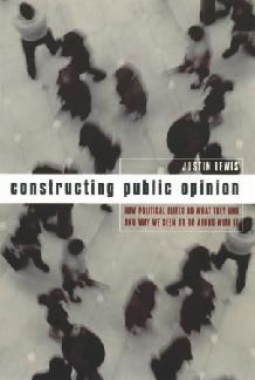Is polling a process that brings "science" into the study of society? Or are polls crude instruments that tell us little about the way people actually think? The role of public opinion polls in government and mass media has gained increasing importance with each new election or poll taken.
Here Lewis presents a new look at an old tradition, the first study of opinion polls using an interdisciplinary approach combining cultural studies, sociology, political science, and mass communication. Rather than dismissing polls, he considers them to be a significant form of representation in contemporary culture; he explores how the media report on polls and, in turn, how publicized results influence the way people respond to polls. Lewis argues that the media tend to exclude the more progressive side of popular opinion from public debate. While the media's influence is limited, it works strategically to maintain the power of pro-corporate political elites.
- Contents
- Acknowledgments
- Introduction
- PART ONE: The Representation of Public Opinion
- 1: Why Numbers Matter and Why We Should Be Suspicious of Them
- 2: Who’s in and Who’s Out: Public Opinion Polls As a Cultural Form
- 3: Suppressing Dissent: The Media Representation of Public Opinion
- PART TWO: The Formation of Public Opinion
- 4: Getting the Right Response? Media Influence on Public Opinion
- 5: What are Opinions and Where Do They Come From?
- 6: The Ideology of Assumptions
- 7: Flickering the Embers of Consent: Public Opinion and The Military Industrial Complex
- 8: Selling Unrepresentative Democracy
- Conclusion: Hegemony and Its Discontents
- Appendix
- References
- Index

